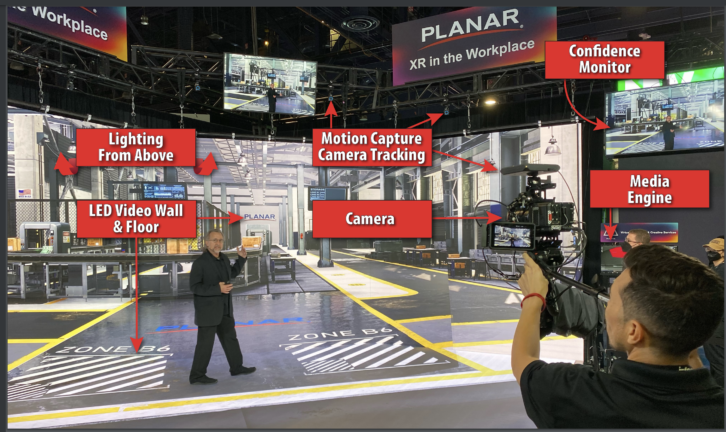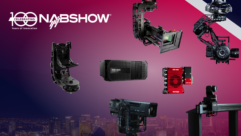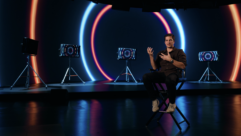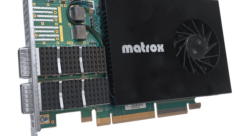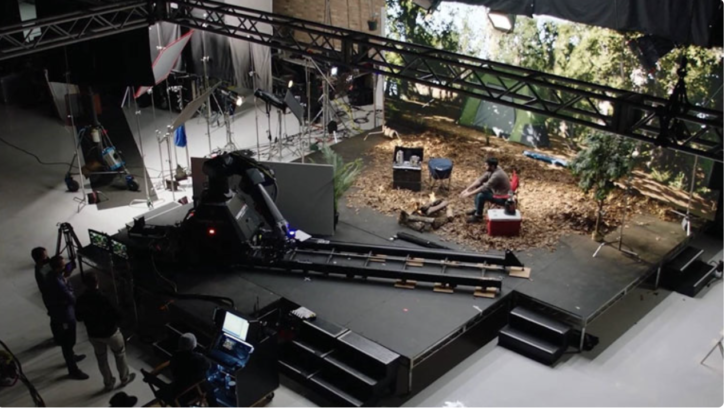
Virtual production (VP) is riding on two waves—the technical advances made with cinema blockbusters like The Mandalorian, and the rising demand for professional video to deliver engaging content to hybrid and remote audiences.
Throughout pandemic, corporations, live entertainment venues, churches, schools, and eSports arenas became familiar settings for virtual and hybrid events and productions. Users and technical teams saw the benefits as they became more comfortable with digital interactions and virtual or hybrid workflows. It became clear that virtual and hybrid experiences could reach remote audiences while deepening engagement and interactivity, supporting new business models, and widening access.
Now people want and expect better production values to continue that trend forward, providing a more professional approach to live streamed and recorded hybrid content, and offering options beyond the customary talking head and Zoom square configurations.
This is an opportunity, and it can also be a challenge without the proper technology and support. Specifically, the Pro AV channel needs VP partners who understand Pro AV–the unique hardware and software components, and the importance of sustainability and service after the sale. This VP trend also introduces a new kind of collaborator into the mix—content experts who understand dynamic content, extended reality (XR), and hybrid live experiences.
A VP environment can be everything from a simple green screen replacement to an extended reality studio to a virtual world. It can be used to expand worship outreach across the country and the world, it can provide business leaders with a platform to reach a global workforce and shareholder community; it can bring a virtual concert experience to far-flung audiences. Pro AV can draw from techniques that broadcasters and filmmakers have learned on the XR stage and apply them to applications closer to home. Imagine for example, a medical instrument company demonstrating their tech from within a virtual operating theater, or a CEO addressing employees, customers, and shareholders from inside a digital model of the company’s factory.
The potential for VP was made visible at InfoComm22 with real-world demonstrations of VP stages. These demonstrations showed that even a small footprint can support a powerful virtual stage, and how familiar gear such as LED displays, cameras, and media servers can come together in this new type of platform. Pro AV always had their hands on these pieces; this puts a different spin on it A virtual studio can be a value proposition for Pro AV end users and an opportunity for integrators to provide a differentiated and forward-looking service.
“Virtual production is where the physical and digital worlds meet.” – Weta Digital
Whether in its simplest or most ambitious form, VP has a few important underpinnings for success.
Key components
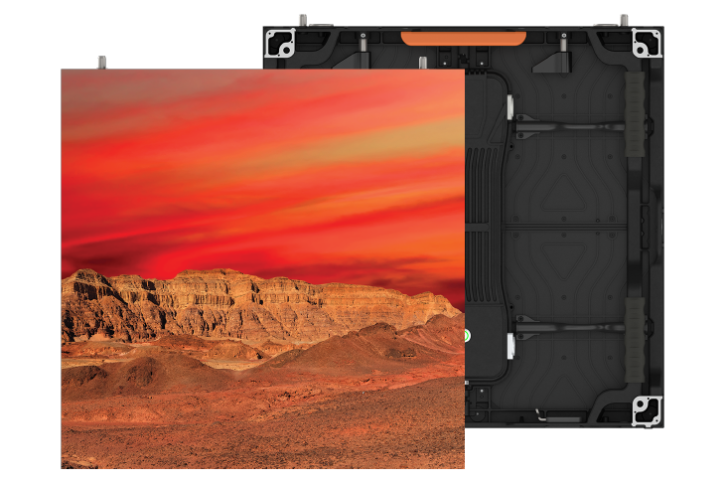
LED Screens:
Early applications of virtual production adapted pretty successfully to the existing capabilities of LED screens, many of them from the rental and staging markets. However since then, manufacturers have added and refined new capabilities that support the in-camera required by VP, installation of virtual studios, and more permanent integration with components including cameras, servers, and motion capture. Many of these features reflect feedback from users. Today’s screens are more flexible; cameras and displays work better together and excel for the specific demands of on-camera performance.
LED screens have been used for this purpose for a long time in broadcast; moire has been vanquished. But there are other artifacts that can affect a virtual studio set up: communication between display and camera, and attention to the optimal synchronization matters. Modern LEDs can deliver curved XR and VR environments as well as floor and ceiling screens for truly immersive applications. These days you can choose displays that have been designed for VP and tested for it.
By creating an entire scene live on an LED screen, visible both through the camera and to the presenter on set, it’s possible to avoid “green-screen fatigue,” a common problem with actors or broadcasters who perform against little more than a mark on a green scrim. This can occur even more so for users in corporate, worship, and even live events settings–a flat, unchanging screen can be too disconnected. The right live LED video wall gives people clear visual context, keeping them as engaged as they would be in a real place.
Best Practice: Layer the visuals on stage to add to depth of field. The screen carries the load as the dynamic background, but adding physical elements like a table or potted plant bring additional reality to the visual.
Cameras, Lighting & Camera Tracking:
Recent years have seen considerable advancement in tracking cameras; depending on the desired complexity of a virtual studio there are automation levels and manually driven options for any budget or application. Studio lighting doesn’t have to be expensive but it does have to be optimally specified. The incorporation of motion capture camera tracking in virtual sets significantly improves the perspective of the presenter, making the set move appropriately to convey accurate environments.
Best Practice: Have enough lights and flexible options. Light the foreground and the people. Storyboard the shoot to understand how camera movements (if any) and different lighting scenarios might be needed. Allow studio time to tweak the stage and rehearse, and to deploy more or different lighting. This is one of the benefits of a permanent virtual stage where you can refine lighting needs and lock them in through repeat use.
Media Engines:
The media engine is the heart of any virtual studio. The Unreal Engine has grabbed the consumer spotlight and raised awareness of the incredible capabilities of these processors and their accompanying software. However, closer to home for Pro AV, familiar media servers provide a range of capabilities. Those manufacturers are natural partners in specifying a virtual studio.
Best Practice: Include your display and media engine partners early. They can help you optimize a small, highly functional studio or go big with a brand-defining virtual stage. Either way they can help deliver accessible, professional, repeatable infrastructure for an ROI-friendly studio.
Key expertise
Content: Just as the right technology partners can help you design a studio that is right-sized for your client, content experts can help set the all-important dynamic content strategy. As virtual production expands into Pro AV, so does networking. Relationships–among manufacturers, integrators, and content experts–set the (virtual) stage for success. As just one example, disguise recently purchased Meptik studios, a leading provider of virtual content, XR, and VR. Look for more of that kind of cross-pollination. Virtual production does not exist in a vacuum. Understand if your client is going to do in-house or third-party content and media management. Engage with your client’s content needs and be a resource for other experts.
Integration and Calibration: Understanding content strategy also means understanding the visual language the client wants to use. Will the camera be moving—now or in the future? Do you want it to be tracked? Will the speakers be moving? Will your client use fixed camera plate shots similar to greenscreen, or will they need a “world”, an XR environment? In between those options is a range of choices that affect everything from technology choices to media partners. Wherever your client lies on that spectrum, your manufacturers can help network around their needs. Today’s VP customers may want to do camera tests against LED backdrops to put together the right combination. Some LED manufacturers can make facilities and mockups available for that exploration, and extend into calibrating the finished stage. The camera, motion capture, virtual world, display, and lighting can and should flow and look natural.
Distribution: Where will your audience see your content? YouTube? Intranet? Broadcast television? Part of a content strategy is to determine the distribution platform. For some corporate clients that may mean multiple platforms, for internal and external communications, so needs assessment is key. There are different levels of customers–some who want to simply elevate from green screens to a modest virtual stage and streaming, which most clients can transition to pretty readily. For those who want to make content from a virtual world for distribution across multiple live and post-produced platforms, expertise is more specialized and knowledgable partners can help.
READ MORE: Four Characteristics Powering Modern LED Video Wall XR Setups
Case Study: Inside Planar Studios
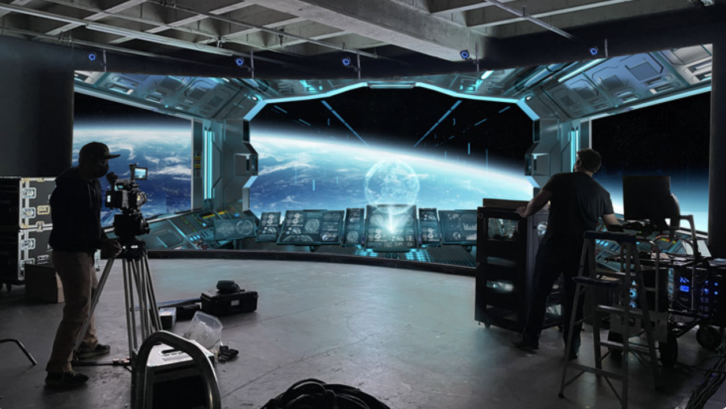 Last June the company opened Planar Studios, an initiative designed to revolutionize the virtual production (VP) and extended reality (XR) markets. Planar saw the change to combine advanced technologies, industry partnerships, and personnel to create realistic on-screen content for VP and XR industries in entertainment, corporate, and education market. The cornerstone is the company’s in-house fine pitch LED display and motion capture expertise through sister company OptiTrak, as well as relationships with key industry partners on the processing side.
Last June the company opened Planar Studios, an initiative designed to revolutionize the virtual production (VP) and extended reality (XR) markets. Planar saw the change to combine advanced technologies, industry partnerships, and personnel to create realistic on-screen content for VP and XR industries in entertainment, corporate, and education market. The cornerstone is the company’s in-house fine pitch LED display and motion capture expertise through sister company OptiTrak, as well as relationships with key industry partners on the processing side.
Planar solutions for VP and XR are being deployed worldwide, including at Orbital Virtual Studios, a Los Angeles-based VP studio dedicated to producing movies, music videos and commercials from pre-production design and development, to production, photography and all the way through post-production.”
Through the Planar Studios initiative, the company leverages Planar’s established leadership in on-camera broadcast studio installations. The company has worked directly with creative and technical professionals to design LED solutions that deliver unmatched in-camera visual performance and deployment versatility needed to develop life-like recorded, streamed or broadcast video content.
Planar Studios is supported by a dedicated VP and XR team and strengthened by collaboration with industry-leading partners who specialize in digital production and developing next-generation visual storytelling tools. While LED display technology is a significant component of VP and XR environments, successful studio implementation also requires a broad range of hardware, software and services. Planar works closely with leaders delivering in these areas, including Epic Games Unreal Engine, disguise, Planar’s sister company OptiTrack, Brompton Technology, Colorlight and more.
“We are proud and honored to work with the world’s leading creative and technological professionals as we set out to perfect the art of VP,” said Executive Vice President Adam Schmidt. “Recent developments in VP and XR are already unlocking wonderful capabilities for storytellers, but we’re just scratching the surface. We recognize advanced technological development, productive industry partnerships and a dedicated team of experts to be key in helping customers overcome creative limitations. Planar Studios is our response and will be a driving force in unlocking the future of VP and XR.”
Planar Academy’s Introduction to Virtual Production CTS/CTS-D Course
Where do I start?
Virtual production is on the rise and rapid advancements that make it better, easier, and more efficient for Hollywood will continue to adapt into Pro AV. It’s shaping up to be a collaborative future–look for providers who are attracting expertise, building connections, working with studios, universities, and agencies. Like many advancements in Pro AV, this is not about selling boxes or screens, it’s about building a new AV platform together and adapting one of the most exciting trends in technology to our industry.
